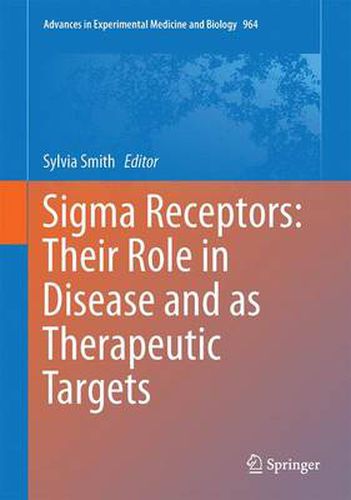Readings Newsletter
Become a Readings Member to make your shopping experience even easier.
Sign in or sign up for free!
You’re not far away from qualifying for FREE standard shipping within Australia
You’ve qualified for FREE standard shipping within Australia
The cart is loading…






Originally confused with opioid receptors and then orphan receptors with no biological function, Sigma Receptors are now recognized as relevant to many degenerative diseases with remarkable potential as therapeutic targets. In this text, new information about the structure of sigma 1 receptor, its binding sites are provided as well as its expression in many cell types. It’s putative role in degenerative neuronal diseases including amyotrophic lateral sclerosis, Alzheimer’s disease, Parkinson’s disease, Huntington’s disease, pain, drug addiction and locomotor activity. Their roles in possible treatments for blinding retinal diseases emphasize the tremendous far-reaching potential for ligands for these receptors. Exciting breakthroughs in this dynamic field in the last decade are reported herein, which will guide future investigators in determining the full potential of this unique, yet abundantly expressed protein.
$9.00 standard shipping within Australia
FREE standard shipping within Australia for orders over $100.00
Express & International shipping calculated at checkout
Originally confused with opioid receptors and then orphan receptors with no biological function, Sigma Receptors are now recognized as relevant to many degenerative diseases with remarkable potential as therapeutic targets. In this text, new information about the structure of sigma 1 receptor, its binding sites are provided as well as its expression in many cell types. It’s putative role in degenerative neuronal diseases including amyotrophic lateral sclerosis, Alzheimer’s disease, Parkinson’s disease, Huntington’s disease, pain, drug addiction and locomotor activity. Their roles in possible treatments for blinding retinal diseases emphasize the tremendous far-reaching potential for ligands for these receptors. Exciting breakthroughs in this dynamic field in the last decade are reported herein, which will guide future investigators in determining the full potential of this unique, yet abundantly expressed protein.